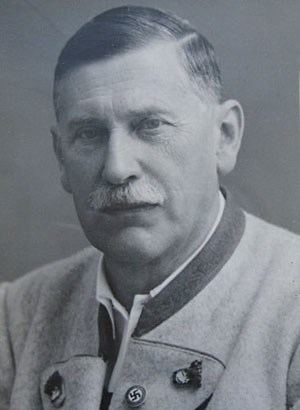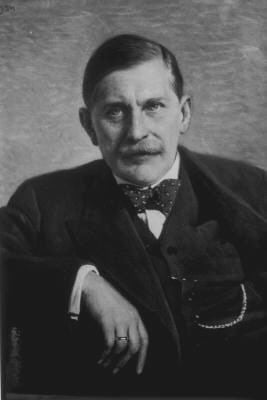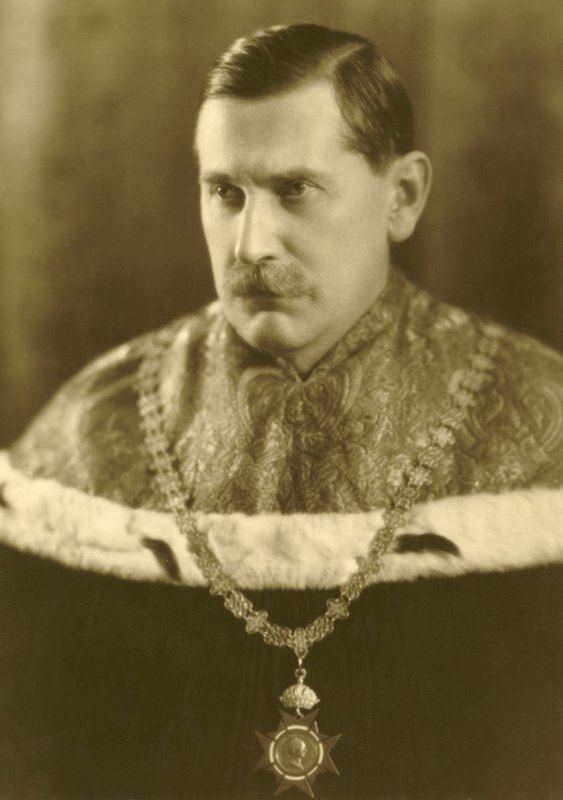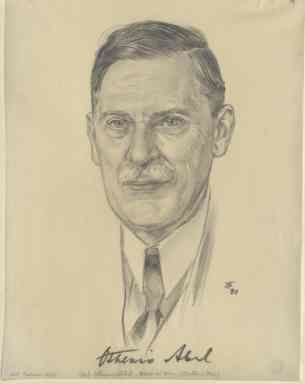Name Othenio Abel | Residence Austria Children Wolfgang Abel | |
 | ||
Born June 20, 1875Vienna ( 1875-06-20 ) Fields Paleontology, Paleobiology | ||
Othenio Lothar Franz Anton Louis Abel (Vienna, June 20, 1875 – Mondsee, Upper Austria, July 4, 1946) was an Austrian paleontologist and evolutionary biologist. Together with Louis Dollo, he was the founder of paleobiology and studied the life and environment of fossilized organisms.
Contents

Life

Abel was born in Vienna, the son of Professor Lothar Abel. Abel earned a PhD, after studying both law and science, from the University of Vienna. He remained there as an assistant to Alpine geologist Eduard Suess, before being appointed a professor of paleontology. Three years later, he finished his habilitation thesis as a paleontologist at the University of Vienna. From 1900 to 1907, he worked at the Geologische Reichsanstalt.

In 1907, Abel became an extraordinary professor in Vienna, and from 1917 to 1934 he was a regular professor of paleontology in Vienna. As such, he led several expeditions that gave him broad recognition, such as the Pikermi-expedition to Greece in 1912, an American expedition (1925) and one to South Africa (1929).

Abel became a member of the Leopoldina academy in 1934. From 1935 to 1940, he was a professor at Göttingen University, after which he was retired, age 61. In 1942, he was appointed an honorary member of the Paläontologische Gesellschaft.
Scientific activity

Abel mainly studied fossil vertebrates. He still saw evolution in a largely Lamarckian way. His main contribution to the field, however, was the formulation, together with Louis Dollo, of paleobiology, which combines the methods and findings of the natural science biology with the methods and findings of the earth science paleontology. From 1928 onwards, Othenio Abel was the publisher of a journal dedicated to paleobiology, Paläobiologica.

In 1914, Abel proposed that fossil dwarf elephants inspired the myth of giant cyclopses, because the center nasal opening was thought to be a cyclopic eye socket. In 1920 he was awarded the Daniel Giraud Elliot Medal from the National Academy of Sciences. He also showed great interest in cave bear remains at the so-called "Dragon's Cave" near Mixnitz.

Abel was an advocate of orthogenesis, he believed that there were trends in evolution that were internally programmed.
Political attitude and National Socialism
Already as a student, Abel took part in anti-semitic riots at the University of Vienna, during the Badeni-crisis of 1897. After the First World War, now a professor, he gave voice to his fear of a power takeover by "Communists, Social Democrats and Jews and more Jews tied to both". As the journalist Klaus Taschwer publicized in 2012, Abel was responsible for the founding of a secret group of 18 professors that sought to frustrate the research and careers of left-wing and Jewish scientists. The rise in violence of National Socialist student groups towards Jewish students in 1934 were met with sympathy by Abel. When such attacks began to be directed at Catholic and international students as well, Abel, now the university rector, was forced into early retirement by the Austrofascist board. This caused him to emigrate to Germany and accept the post in Göttingen.
He visited Vienna again in 1939, after the Anschluss with Nazi Germany. After seeing how the Nazi flag was shown at the university building, he pronounced this the "Happiest moment of his life". The new regime honored him with the newly created post of "Honorary Senator" of the University - an honour that was rescinded after the Second World War, in 1945. A letter of recommendation for the Goethe Prize points out how Abel had always "fought in the first line" against the "Judaification" of the University.
There is, however, also some evidence that Abel did not wholeheartedly support Nazi ideology. Count Stamati, then working for the Reich Ministry for the Occupied Eastern Territories, recalled how Abel placed doubt with the Untermensch theory at a meeting of the Ministry. Such proclamations allegedly caused him to be blacklisted by the SS.
